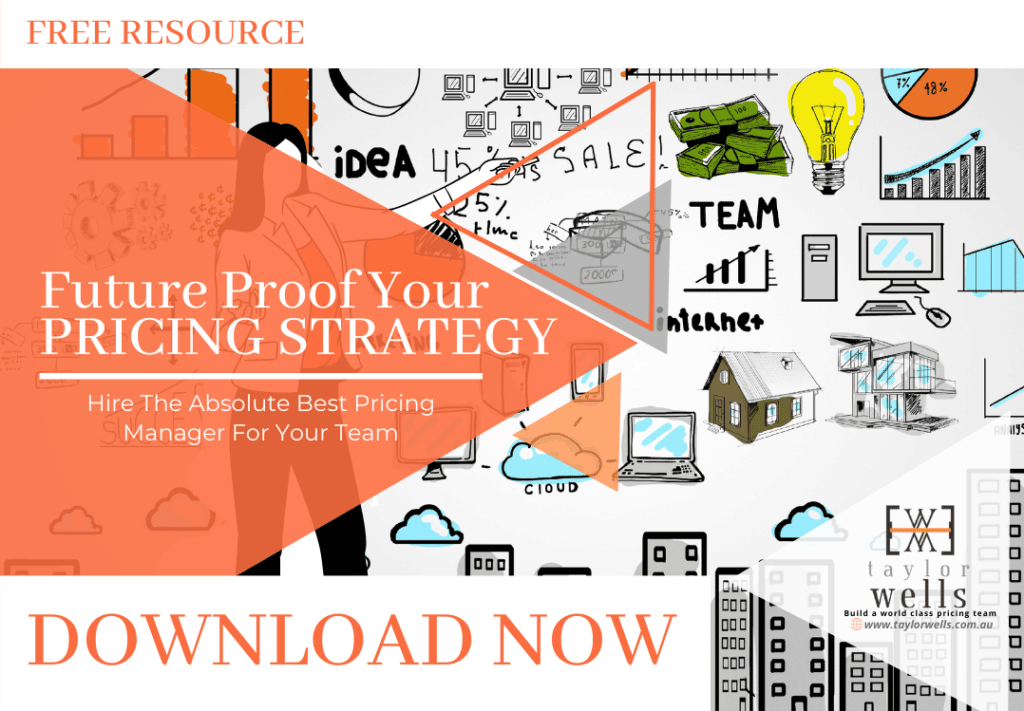
The Most Effective & Trendy Marketing Steps to Launch & Release a New Product 📏
What makes a product rollout successful? Businesses use a variety of techniques to advertise their products and services. Research, testing, and actions to ensure that customers purchase a product are necessary for a product rollout strategy. Are you planning to introduce a new product or service to the market? You must learn the most effective marketing steps to launch a new product.
>Download Now: Free PDF Future Proof Your Pricing Strategy
According to the Harvard Business Journal, the most common cause of problems during a product launch is the lack of preparation and poor strategy. Tens of thousands of new products enter the market each year. But only 5% are succeeding. What is the secret of that 5%? Is there something you can do to ensure the success of your rollout?
In this article, we will discuss marketing steps to launch a new product. We argue that both going all-in and taking it slowly have their advantages and disadvantages. That is why it is important to know where your product will fit in the industry. Are you a pioneer or a competitor?
At Taylor Wells, we believe that selecting a rollout strategy that is well-suited to your company’s particular qualities, innovation, and growth can help you succeed. By the end, you will know which strategy is the best for your next rollout.
The Best Marketing Steps on How to Introduce, Release, & Launch a New Product in the Market
So you cleared all major hurdles after devoting significant resources to designing, testing, and building a new product. You passed all of the development stumbling blocks, and you’re ready to go. You may be asking yourself: Should I implement the new product to a small group of customers to see how they react before going any further? Or will I make it available to everyone all at once?
It is a critical decision, particularly in industries with high distribution costs and fierce competition. Here are three steps to help you decide what strategy to implement in the launch of your next world-class product:
Step 1: Know The Pros and Cons of Taking It Slow vs. Going Too Fast
You have two main strategies to choose from. Each approach has its pros and cons — going slowly versus going all-in — and it’s not always clear which is best in a given situation.
If you go all-in on a global launch, you could lose a lot of money if the product is not as successful as you had hoped.
Imagine enduring time-consuming negotiations with multiple salespeople, increasing supply levels, and tailoring packaging for each consumer segment. You would also pay upfront for setup and maintenance costs and distribution services. Then you discover that these costs will never be recovered. This is one of the worst things that could happen in a product rollout.
On the other hand, if you launch little by little to avoid the costs of failure, you may be outperformed by competitors.
Potential market testing is important, but if you spend months studying customer responses and gradually dipping a toe into one small market at a time, likely, your competitors will immediately take market share.
Even if you have a few customers who adore your product, allowing your competitors to drive up the market with their offerings will be a disadvantage on your part.
Honda and Toyota are good illustrations for this argument. Toyota focused on the Japanese market when introducing hybrid vehicles, while Honda launched the Insight in the United States and Japan at the same time.
Honda beat Toyota to the American market, but in return for its wider distribution, failure was more costly. Regrettably, for Honda, the Insight was unpopular with American drivers. This allowed the Prius to subsequently grasp a much larger segment of the global hybrid market.
Should the company have moved more gently, as Toyota did, risking being passed by a competitor? Or maybe Honda make the right judgment and just happen to be unfortunate?
Step 2: Determine the Marketing Steps on How to Introduce, Launch, & Release your New Product in the Market
You now have a better knowledge of the pros and cons of the two strategies. It’s time to choose which path is the best to take. Let us first read into a case study on mobile phones:
Mobile phones are a massive, global industry but their distribution is handled on a country-by-country basis. This makes the all-in approach expensive.
A recent study documented the introduction of more than 300 new mobile phone innovations. The researchers conducted a thorough review of thousands of models from more than two dozen manufacturers.
They found out that the first to integrate a given innovation in one market was not always the first in other markets.
Pioneers were overtaken in two-thirds of all subsequent markets in their sample. 80% of the innovations also failed. It implies that some caution is required when releasing an untested product feature.

So, how can companies determine which approach is best for their product rollout?
Global pioneers of mobile phone innovations debuted more selectively than followers. This makes sense because there is more to be gained by careful testing with limited precedent, unlike when a market was already established by competitors.
Our advice is that when you are a pioneer, you can benefit from launching your product in stages, and taking precautions along the way. But if you are a follower, you may want to go all-in while keeping in mind the current market conditions.
Kyocera, as a camera-phone pioneer, was initially less concerned with competition and more concerned with failure risk, so the company launched its camera phone more carefully, only in the Japanese market.
On the other hand, Sanyo lagged behind Kyocera in releasing the first camera phone. Sanyo opted to launch more broadly including the crucial United States market.
There is a finite window in which money could be made from a given innovation, particularly in rapidly advancing technologies such as the mobile phone space. Consequently, more and more companies began to offer the camera feature. Companies became less cautious and more aggressive in their approach to product launches.
Some firms find it difficult to avoid the influence of past experience.
However, we also understand that those who recently had a significant success or failure find it difficult to follow the advice we have given above.
Businesses were faster to launch if they were recently surpassed by a competitor. They are slower if they were recently burned by a big flop. After competitors preempted Kyocera’s camera-phone in global markets, the company took a less cautious approach in rolling out its next innovation.
According to the study, firms that recently missed out on releasing a popular feature targeted an additional 137 million consumers in their next innovation rollout.
In contrast, mobile phone manufacturers targeted their rollouts at smaller audiences, with an estimate of 220 million lesser consumers, after one major flop.
Making such changes is an understandable reaction to a disappointing recent experience. But it isn’t always the best move for the company.
We advise you to think deeper when deciding on a rollout strategy. Past lessons may be irrelevant to the characteristics of the innovation and market at hand.
Step 3: Execute The Marketing Steps on How to Introduce, Launch, and Release your New Product in the Market
Let’s say, you’ve already made your decision. You have chosen which approach to implement in your product rollout. Then the very next step is execution.
If you decided to go all-in, your main challenge will be organising an intricate worldwide release. Conversely, you’ll need to assess where and how to begin if you want to test the waters first.
It can be tempting to launch in a market where you are popular or have a considerable market share. This increases your chances of quick success, but it does little to help you understand more about your product’s overall market potential. In an ideal testbed, customers can choose between competing offerings.
Firms use two types of signals to better comprehend the potential of a product:
Regardless of whether they decided to go all-in on a certain market or call it quits, identifying these types of indicators helps firms feel more confident about their launch strategies.
1. Robust indicators of success, from tough markets which assist firms in avoiding inaccurate rollout extensions
Strong predictors of success come from markets where competitors already sell a version of your latest development.
The learnings that such testbeds may allow you to make the most of your innovation resources in the long haul. This is true even if launching in such a harsh environment may not appear to make much financial sense in the short term.
For instance, if Motorola wished to be convinced with the potential of its camera phones, they should launch in Japan or Korea, where it would have to outperform local powerhouses like Kyocera and Samsung to succeed.
It will probably do well elsewhere as well if Motorola’s new camera phone does well in those markets.
2. Robust failure indicators, from markets where failing is difficult which assist firms in avoiding inaccurate rollout terminations
Strong failure indicators come from markets where failure is unlikely. A skincare company, for example, might select Paris or Tokyo to offer a new product. Customers in these cities are usually eager to try out hot trendy beauty products.
P&G tested its SK-II makeup line in Tokyo because they knew that it wouldn’t be because consumers were unfamiliar with multi-step skincare routines if it failed. If SK-II failed there, it would eventually fail elsewhere, and P&G would be able to discontinue the product line with conviction.
Bonus Tip – How To Set Your Pricing: Marketing Steps on How to Introduce, Release, and Launch a New Product in the Market
1. You must learn what your customers want. What do your competitors offer and how much do they charge? This gives you a model for analysing the various prices and products on offer, as well as where you fit in.
2. Ask yourself, what do I want for my pricing to fulfil? Then select a pricing strategy that will assist you in achieving these goals.
Our findings show that incremental earnings gains can begin to occur in less than 12 weeks with the right set-up and pricing team in place. After 6 months, the team can capture at least 1.0-2.25% more margin using better price management processes.
After 9-12 months, businesses are very often generating between 3-7% additional margin each year as they identify more complex and previously unrealised opportunities, efficiencies, and risks.
3. Consider a price based on value. Inquire with existing customers about what they value, who their favourite competitors are, and why they would choose to buy from you.
〉〉〉 Get Your FREE Pricing Audit 〉〉〉
Bottomline – How to Introduce and Release a New Product in the Market
An early mover interested in experimenting with a broader range of innovations should launch successively. They must initiate challenging test markets to find out more information about customer preferences and demand in various markets before expanding.
In comparison, a late entrant must thoughtfully define the type of innovation that the market appears to desire. This way, they will benefit from a simultaneous global rollout.
There is no one-size-fits-all options for marketing steps to launch a new product. No one can avoid market uncertainty. But choosing a well-suited rollout strategy for your firm’s specific characteristics, innovation, and growth can help increase your chances.
For a comprehensive view and marketing research on integrating a high-performing capability team in your company,
Download a complimentary whitepaper on How To Maximise Margins.
Are you a business in need of help to align your pricing strategy, people and operations to deliver an immediate impact on profit?
If so, please call (+61) 2 9000 1115.
You can also email us at team@taylorwells.com.au if you have any further questions.
Make your pricing world-class!
Related Posts
Leave a Reply Cancel reply
Categories
- marketing strategy (26)
- Organisational Design (14)
- Podcast (114)
- Pricing Capability (87)
- Pricing Career Advice (10)
- Pricing Recruitment (19)
- Pricing Strategy (290)
- Pricing Team Skills (13)
- Pricing Teams & Culture (24)
- Pricing Transformation (47)
- Revenue Model (25)
- Sales Effectiveness (27)
- Talent Management (7)
- Technical Pricing Skills (35)






